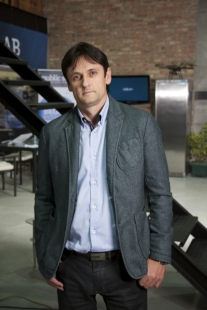Greenion is an interesting technology that uses ionized water in order to reduce carbon dioxide to bicarbonate and it could be applied from industry to vehicle
The discovery of a methodology of reducing carbon dioxide is the Holy Grail of science, a goal still far from being achieved with satisfying results. The main problem is the high stability of CO2 and the consequent difficulty in carrying out chemical transformations. Among the various proposals in the international comunity, today we describe an approach a little different from the usual that comes from Hungary, namely the reduction of CO2 through water.
How it work
The Greeion project uses a methodology patented by the Hungarian Ferenc Meszaros into systems that can theoretically be applied anywhere, at the back of the cars, in the industries, or even far from industrialized centers, in combination with solar cell fields or wind turbines. The water spontaneously gaves autoprotolysis, i.e. it reacts with itself producing H3O+ and OH– ions, in very low quantities, about 100 nanomolar. If the water is supplied with electricity at an appropriate voltage, the autoprotolysis reaction can be favoured, enriching the water of ions and obtaining acidity values up to a pH 11. The alkaline water (i.e. rich in OH– ions) can reacts with the gas rich in CO2 reducing the carbon dioxide in the hydrogen carbonate ion HCO3– (commonly known as bicarbonate) and the carbonate ion CO32-. In order to increase the yield of the reaction, the sphere or cylinder where the reaction occurs must be composed of specific materials or at least coated with a tiny layer of Titanium or titanium dioxide. The metal, pure or the oxide, acts as catalysts, directing the electrons towards the surface in contact with water and CO2, making the reaction faster.

Where Greenion can be employed
This new technology therefore only needs a source of water and a source of electricity, so it can be applied anywhere, moreover waste products (bicarbonate and carbonate) are very stable molecules that have low ecological impact. For example, a large factory can treat CO2 as soon as it is produced, transforming it into bicarbonate that can be either deposited or released into the sea, having an almost zero impact on the atmosphere and the surrounding ecosystem.
Impact on the transport
A further application concerns the vehicle market, which is increasingly careful about the efficiency aspect of catalytic exhaust gas systems. The first prototypes based on Greeion chemistry are able to reduce the CO2 emitted in the exhaust gases, condensing the exhaust gas that contains water directly in the catalyst. The system generates and ionizes water and therefore does not need to be recharged. The only drawback is the size of the system, still too large and invasive, but on the other hand, is still the Holy Grail that we are looking for.